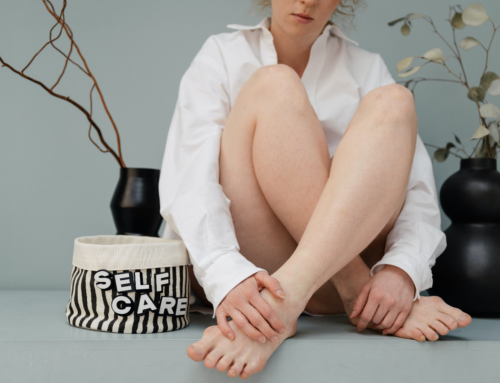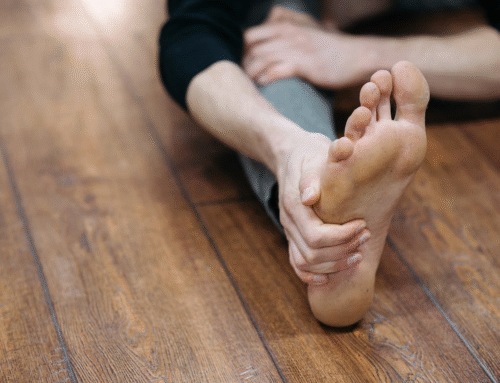Some people try using bleach at home as a last resort to treat toenail fungus. Even as a last resort, using bleach in this way is not a good idea. Toenail fungus can be difficult to manage. It is understandable why risky home methods like using bleach could seem attractive. However, before you attempt any treatment for fungus in general, especially anything done at home, you should know everything that is available about the risks and benefits of the treatment.
Knowing this information is important with any procedure so that you fully understand the procedure you’ll be doing. The information on using bleach on toenail fungus is overwhelmingly negative. This is evident in the advice that medical professionals and doctors give.
Bleach Treatment
Treating toenail fungus with bleach can have major implications for your health and wellness in general, and for the skin of your toe itself. This procedure requires putting the bleach directly onto the skin and toenails. Direct contact with the chemical can seriously affect the health of these organs.
Bleach is a very dangerous, toxic chemical. It has strong, harmful interactions with the structures of the human body, which can lead to serious changes in the body’s health. When you put bleach on your toes, you are exposing yourself to an abrasive cleaning chemical that has a high potential to cause long-lasting harm.

Effectiveness of bleach treatment
Using bleach to treat toenail fungus is also a bad idea because of how ineffective it is. Simply put, bleach is not an effective antifungal agent. This is because it wasn’t designed for this purpose. To treat toenail fungus effectively, bleach would need to penetrate the toenail itself to get under the nail bed. However, getting under the nail bed is one of the difficulties of treating toenail fungus. Prescription antifungal medications often struggle with doing this effectively. And they have been designed for that explicit purpose. Even if bleach can get under the nail, it won’t kill all of the fungi. You will be left with fungal spores that will continue to grow after the treatment. Additionally, if the bleach somehow does make its way into the nail bed, you are likely in store for an even worse chemical burn than if it hadn’t.
Side effects of using bleach
For example, using bleach to treat toenail fungus can cause severe chemical burns. Chemical burns are the most common injury that results from using dangerous chemicals like bleach. These burns form as the chemical interacts with, damages, and irritates the skin. Bleach is particularly damaging and dangerous because of how basic it is: ammonia bleach is one of the most basic chemicals available.
Putting undiluted bleach on any part of your body is likely to lead to a chemical burn of some sort, and these chemical burns can be difficult to treat. By using bleach on your skin, you are setting yourself up for more trips to the doctor than if you were seen for the toenail fungus by a podiatrist originally. Diluted bleach poses a less serious risk of chemical burns than undiluted bleach, but it is still very dangerous to attempt that treatment.
Chemical burns from using bleach to treat toenail fungus are often a medical emergency that requires urgent medical care to prevent long-lasting damage. If you have used a chemical like bleach on your skin, wash it off thoroughly immediately and assess the damage. If you have signs of a very severe chemical burn, like throbbing pain, blistering, pus formation, or other symptoms of a severe chemical burn, you must be seen by a medical professional as soon as possible. This is not a condition that you can treat at home. Chemical burns can get worse over time if not treated by a medical professional.
Chemical Burns from Bleach
Chemical burns are the most common injury caused by handling dangerous chemicals like bleach. These chemical burns form as the chemical interacts with the skin, causing damage and irritation.
Chemical burns from using bleach to treat toenail fungus can be very serious and often require urgent medical attention. If you experience a chemical burn, seek medical care right away to reduce the risk of lasting damage. If bleach or another harsh chemical comes into contact with your skin, rinse the area thoroughly with plenty of water and mild soap as soon as possible.
Afterward, assess the damage done to your skin. If you notice signs of a very severe chemical burn, which include throbbing pain, blistering, pus formation, or other symptoms of a severe chemical burn, contact a medical professional for evaluation and treatment as soon as possible. This is not a condition that you will be able to treat at home. Chemical burns are very serious and can get worse over time if not treated by a medical professional.
Dangers of Bleach
Treating toenail fungus with bleach is also very ineffective, so these attempts to treat the fungus likely won’t even do any good at all. To treat toenail fungus effectively, bleach would need to penetrate the toenail itself to get under the nail bed. Prescription antifungal medications often struggle with being able to treat fungus effectively, and there has been a significant amount of research and money put into their development.
Bleach isn’t even effective at getting under the nail into the nail bed where the fungus resides. If bleach does get into this part of the toe, the fungus underneath it won’t be cured completely. You will be left with fungal spores that will continue to grow after the treatment. If the bleach somehow DOES make its way under the nail and into the nail bed, the sensitive nail bed tissue will likely become even more burned by the trapped bleach than if the bleach hadn’t penetrated that layer.
Unsafe Bleach Treatment
For example, when deeper layers of skin become burned and damaged from bleach, the skin’s natural protection from infection diminishes. This is an important barrier to infection for the entire body, and deep chemical burns could have implications for the body itself.
Unsafe bleach usage includes the necessity for medical treatment for chemical burns. Treating may involve IV fluids, antibiotics, physical therapy, and cosmetic surgery; to avoid chemical burns developing in the first place, don’t use bleach on your skin at all. Toenail fungus is often an embarrassing and frustrating condition to treat, but bleach shouldn’t even be a last resort.
There are many more effective treatments available for toenail fungus out there that are overall much better options than bleach. Bleach usage has only one benefit, which is convenience. However, the inconvenience of a severe chemical burn is much scarier and more annoying to deal with than simply receiving effective treatment from a licensed podiatrist in the first place.
At-Home Treatments for Fungus
Also, bleach will not be effective at eliminating the fungus itself. This chemical is not a good antifungal agent. It will not be able to penetrate the nail into the nail bed where the fungus is. Other DIY home treatments for toenail fungus also have this problem. Some examples are Vicks VapoRub, as well as prescription and over-the-counter topical treatments. If you are intent on trying to treat fungus at home, there are over-the-counter prescription creams that are available.
You should be aware that these are very weak and may even take years of application to see any improvement. It takes even longer to see a fully cleared nail. While these are definitely a better option than bleach, they are still unlikely to eliminate the fungal infection. They are much safer than bleach.
Safer Treatments for Toenail Fungus
While a majority of treatments available for toenail fungus lack effectiveness or pose risks of danger, there are some options available that are effective and still safe.
The PinPointe Laser is an FDA-approved treatment for the fungus that only requires one session to eliminate the fungus. To learn more about the PinPointe laser technology and schedule a free consultation with one of our podiatrists, visit our website here.
Laser Treatment for Toenail Fungus
The PinPointe laser offers the best treatment for toenail fungus. The FDA has approved it, and in most cases, one session completely eliminates the fungus from the nail bed. The laser works safely without any risk of side effects. Unlike oral medications, the laser has fewer restrictions, making it accessible to more people. In fact, the only people who can’t get the PinPointe laser are diabetic patients with severe neuropathy. To see all of our 150 podiatry clinics for PinPointe laser, visit our page here.




